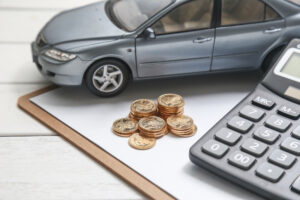There’s a deep-seated misunderstanding among consumers that a balloon payment makes a car cheaper, or it allows them to drive a vehicle they simply cannot afford.
– Ghana Msibi, CEO of WesBank Motor Division
Factoring a balloon payment into the finance agreement of your next car purchase may come with some appealing benefits, but make sure these benefits are understood clearly and used wisely. Responsible budgeting is key with such payments, so you’ll need to act sensibly during the term period to maximise what they offer.
A balloon payment allows a buyer to take an amount owing on the purchase price of a car and set it aside, meaning the monthly instalment amounts are calculated on a lower value – in turn making repayments more affordable. You’re essentially paying off a loan for most of the car, but not all of it. The amount set aside at the outset remains the buyer’s responsibility and will still need to be settled in the long run.
“There’s a deep-seated misunderstanding among consumers that a balloon payment makes a car cheaper, or it allows them to drive a vehicle they simply cannot afford. However, this is not what a balloon payment is designed for,” says Ghana Msibi, CEO of WesBank Motor Division. “This type of payment is intended to assist with cash flow management at the start of a finance agreement, but only if you can afford it. It may help to ease the burden of monthly expenses, but buyers with balloon deals may need to use cash they’ve been saving to settle the balance owed at the end of term.”
Depending on the percentage of the balloon amount, the money saved on monthly payments should more than cover the costs of interest for a loan in order to refinance the lump sum of debt at the end of a balloon term. In other words, it could be more prudent to save the money yourself while driving the financed vehicle than it would be to apply for another bank loan to settle the outstanding amount owing on the vehicle after years of driving it.
The reason a breakeven point is so important to understand is that South Africans have a tendency to change or upgrade vehicles more often than is financially viable.
– GHANA MSIBI, CEO OF WESBANK MOTOR DIVISION
Vehicle owners entering into a balloon payment deal should familiarise themselves with the term ‘breakeven point’. The breakeven point occurs when the financed car’s trade-in value matches the amount still owed to the bank. When calculating the breakeven point, it’s important to include the amount outstanding in the balloon debt at the end of the loan period.
“The reason a breakeven point is so important to understand is that South Africans have a tendency to change or upgrade vehicles more often than is financially viable,” continues Msibi. “The breakeven point on a vehicle financed with a balloon payment is further down the line than it would be with a conventional instalment deal. If your breakeven point comes at 36 months, but you simply cannot resist a shiny new car after only two years, the amount owed on your first car will be added to the cost of the new deal.
“As such, you’re still paying off a portion of your old car while driving your new one. Consumers who do this multiple times could find themselves in financial trouble if, for example, there is a change to their income and financial situation, resulting in outstanding debt becoming unmanageable. This is a dangerous trap to fall into, and we strongly advise our customers to consider changing cars only once the respective breakeven point has been reached. This will keep monthly repayments, the value of their current car, and the balloon debt evenly balanced.”
We always advise our WesBank customers to look beyond the repayments when gauging what they can afford when buying a car.
– GHANA MSIBI, CEO OF WESBANK MOTOR DIVISION
It is also important not to view a balloon payment as an alternative to an upfront deposit. A healthy deposit on a new or used car will always reap dividends further down the financial road, as it will not only bring your breakeven point forward, but it will also lower the monthly repayment costs and the deferred debt held in the balloon.
“We always advise our WesBank customers to look beyond the repayments when gauging what they can afford when buying a car. With vehicle ownership a monthly instalment is not the bottom line, as other responsibilities including fuel, insurance, tyres, regular upkeep and unrelated living expenses also need to be factored into affordability,” says Msibi. “There’s a big difference between being able to afford a car and being able to afford owning it.”
WesBank offers a range of useful tools and calculators designed to answer your vehicle finance research questions. The newly-launched WesBank App enables you to find out how much you can expect to get for your current car, work out what car you can afford, apply for vehicle finance and get approval in a matter of minutes, or calculate the monthly repayments on your dream car.






